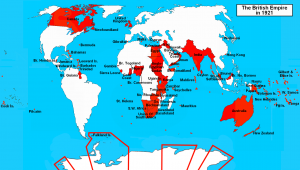The British Labour Party Uses Humanitarian Assistance as a Means of International Diplomacy In the Twenty-First Century
The white Raj came to realise in the early 1940s that its years were numbered, as Britain’s ability to defend its Asian Empire, with war raging in Europe, was brought into question and increasing reliance had to be placed on Indian support and forces in the face of the Japanese threat Dominion status had accordingly been offered to the Indians, once the war was over, and detailed propositions had been formulated by Sir Stafford Cripps in 1942; in that year Japanese seizure of the British possessions in the Far East, notably Singapore and Burma, had made Indian help in the face of a threatened invasion of India crucial. However, both the predominantly Hindu Congress party and Muslim League rejected the propositions put forward by Sir Stafford Cripps. Congress had objected particularly to Cripps’ recommendation that provinces might opt out of the projected dominion, while the league rejected the proposal on the entirely opposite ground that the idea of a separate Muslim state was not contemplated. Gandhi, in particular, had contributed to the failures of Cripps’ mission with his demands that the British should leave at once, even if this meant leaving India to havoc and the Japanese. The British obviously could not comply with Gandhi’s demand, and when widespread disorder had followed the inauguration of a ‘Quit India’ campaign, by the middle of 1943, 3600 were imprisoned, including Gandhi.
As the war ended it was clear that independence for India could not be delayed, but there was an obstacle. The unity that the British had bestowed on the country was unlikely to be permanent. Since 1940 Mohammad Ali Jinnah had been contemplating a two-nation theory, and under his leadership the creation of a separate Pakistan had become the unrelenting policy of the Muslim League. The Hindus, However, were unwilling to contemplate partition; Gandhi and Nehru believed that the communal rift was essentially a domestic problem that Indians would resolve once they had obtained self- government. Gandhi predicted that when freedom had been gained “an interim solution will be found to be easy.”15 Nehru, an agnostic, whose ideal was a secular state, never envisaged a country divided along religious boundaries. In general, Congress believed that the British, with conscious intention of “divide and rule,” were stimulating the conflict.
In March 1946, however, the British Labour Government sent a Cabinet mission to India, consisting of Lord Patrick- Lawrence, the secretary of State for India, Sir Stafford Cripps, the President of the Board of Trade, and A.V. Alexander, the First Lord of the Admiralty, to try to get agreement between the Congress and the Muslim League, by suggesting the immediate establishment of an interim government as a preliminary to independence. The Muslim League rejected this British scheme. The proposal recommended that all positions should be held by the Indians and, as a long-term solution, the creation of a federal government which would have the central authority with control over foreign affairs, defence and communication, and would give other issues to the provincial governments. The significant feature of the federation was to be the organisation of the provinces into three groups, one predominantly Hindu and the other predominantly Muslim. Ironically, this time, the Muslim League said that the United Kingdom was favouring the Hindus. Therefore, the leader of the Muslim League, Mohammed Ali Jinnah, in August 1946, inaugurated Direct Action by the League for securing a separate sovereign state for Muslim. The campaign began with communal riots in Calcutta, which resulted in 4,000 dead and 10,000 injured. In early September rioting broke out in Bombay, in October destruction and disorders in East Bengal led to Hindu evacuations; in October and November there followed a holocaust of Muslims in Bihar.



